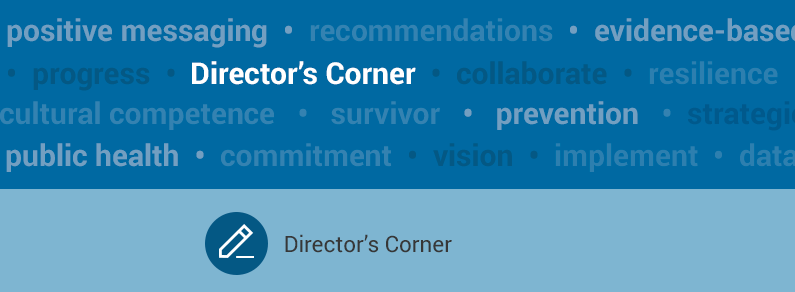Toward Zero Suicide: The Essential Role of Data
March 05, 2015

Zero Suicide is a systematic approach to preventing suicide in health care and behavioral health settings. The Zero Suicide approach is based on a commitment to patient safety and a belief, informed by data, that health and behavioral health care systems can prevent suicides among the people in their care. Because of the risks faced by their patients and the proven tools that now exist, health care settings, especially behavioral health settings, are the single best place to begin saving lives that otherwise would be lost to suicide. The data show that about half of all people who die by suicide saw a non-psychiatric physician in the year before they died, while almost a third saw a mental health professional. About 25 per cent saw a physician in the month before their deaths. These data call on us to connect suicide prevention and health care.

The data also show that a focus on suicide prevention in health care is effective. There are a number of strategies that research has shown can reduce suicides among people in health care settings. These include:
- Ask people about suicidal feelings. Research shows that affirmative responses to a simple question about suicidal feelings asked as part of a waiting-room survey predicted suicide deaths. The research also reveals that a suicide screening tool can be used reliably and is far better than relying on clinical judgment alone, which is notably imprecise about predicting future behavior.
- Help patients develop a personal safety plan. Barbara Stanley and Greg Brown designed and tested a brief collaborative personal safety plan. It is a brief, feasible intervention that has been approved for use by the Department of Veterans Affairs, and it is available to all health care and behavioral health care organizations.
- Restrict access to means of self-harm when people are at risk for suicide. Numerous studies have shown that restricting the access of persons at risk for suicide to the means of self-harm results in a dramatic reduction in suicide rates. Personal means restriction identifies means that might be available to people and that they may have considered as a means of self-harm (e.g. a firearm, medication in large quantities) and identifies a way to reduce access to these means (e.g. safe storage) until the danger of suicide has passed.
- Treat suicidal feelings and support patients experiencing these feelings. Too often, health care providers treat mental health symptoms alone, hoping this will reduce suicidal feelings. Evidence is emerging that providers should directly address suicidal feelings in addition to mental health symptoms, and effective therapies are being tested.
- Provide supportive contacts, especially during periods of stress or transition. Supportive contacts or personal follow-ups (such as a telephone call, home visit, text, or even a postcard) can make a big difference for people who may be feeling isolated and at-risk. Personal follow-up for suicidal patients during times of stress or transition should be our standard of care. Supportive contacts help hospitals and emergency departments ensure that patients maintain their connection with the health system and keep their next appointment.
The data also clearly show that a comprehensive approach using all these tools is far more effective than any single approach to this problem. The Henry Ford Health System’s “Perfect Depression Care” initiative, under the leadership of Dr. Ed Coffey, used the strategies listed above and achieved a reduction of more than 70 percent in the suicide rate among the system’s patients. Furthermore, the Zero Suicide approach has been shown to be feasible. It has been successfully implemented at Centerstone, one of the nation’s largest community mental health networks, and at the Institute for Family Health, a large and well-respected health care network. Dozens of health care organizations across the United States are currently implementing Zero Suicide.
Data is also essential to the success of the Zero Suicide approach. It goes without saying that health care organizations adopting Zero Suicide need to track suicide deaths by people who receive care, in order to improve their work and measure the success of their efforts. These organizations also need to collect data to ensure that they are implementing this model fully and with fidelity. Many behavioral health care providers already use data to monitor team-based interventions such as Assertive Community Treatment. A similar approach can be used to measure whether Zero Suicide is being effectively implemented. A Zero Suicide Fidelity Assessment tool will soon be available on the Zero Suicide website.
Zero Suicide is based on data demonstrating that we can save lives being lost to suicide among health care patients. We must also use data to support the effective implementation of Zero Suicide, to continually improve the quality of care, and to encourage more health care systems to make suicide care a core aspect of their work.
Resources
To learn more about Zero suicide, we recommend Zero Suicide in Health and Behavioral Health Care and What Is Zero Suicide?
To hear more about Michael Hogan’s perspective on Zero Suicide, watch his videos on Zero Suicide: A Policy-Making Perspective and Zero Suicide in Health and Behavioral Health Care.
To learn more about some of the other approaches mentioned in this Director’s Corner, see the Safety Plan Treatment Manual to Reduce Suicide Risk: Veteran Version and Henry Ford Health System Perfect Depression Care.
